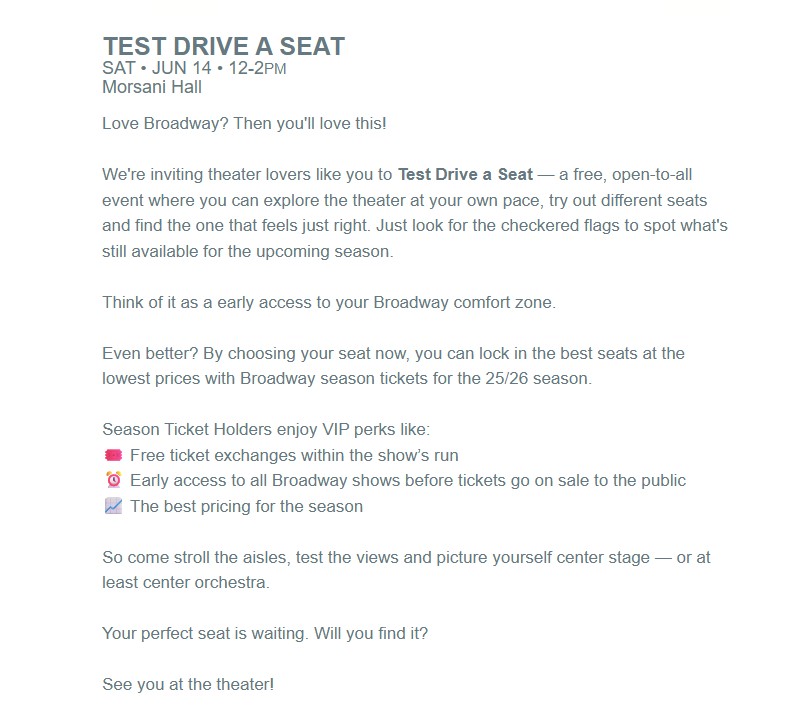I had purchased tickets from the Straz Center in Tampa, FL as a gift for family members earlier this year so I ended up on their mailing list.
This week I received an email inviting me to a sort of open house they are hosting (below) in a couple weeks where people can “test drive” seats they want to sit in at Broadway shows.
I would be interested to see how many people attend the event. I am sure there are quite a few people who are seriously invested in where they sit, but there are also likely to be quite a few people who will take advantage of the opportunity to wander through the hall without the pressure of needing to push through a crowd to find their seats before a show.
I offer this as an interesting marketing tactic others may want to emulate in some degree.
However, on a personal level I will say that I had a difficult time and faced so many barriers in purchasing tickets, including having the staff offer solutions and then contact me the next day to rescind that solution, offer an alternative and subsequently rescind that offer the following day. The recipient of the tickets also needed to navigate some hurdles.
I rarely complain aloud about an experience I had on my blog but the issues I faced were so bad that I am doing so. If other customers faced problems similar to those I did, I feel like this test drive offer isn’t going to create better relationships with the audience. Their time would be better spent on fundamentals like tightening up policies and procedures before employing an approach like this.



There is another way. The Gewandhaus Leipzig in Germany (concert venue) offers flex- tickets for a small premium. Not an…